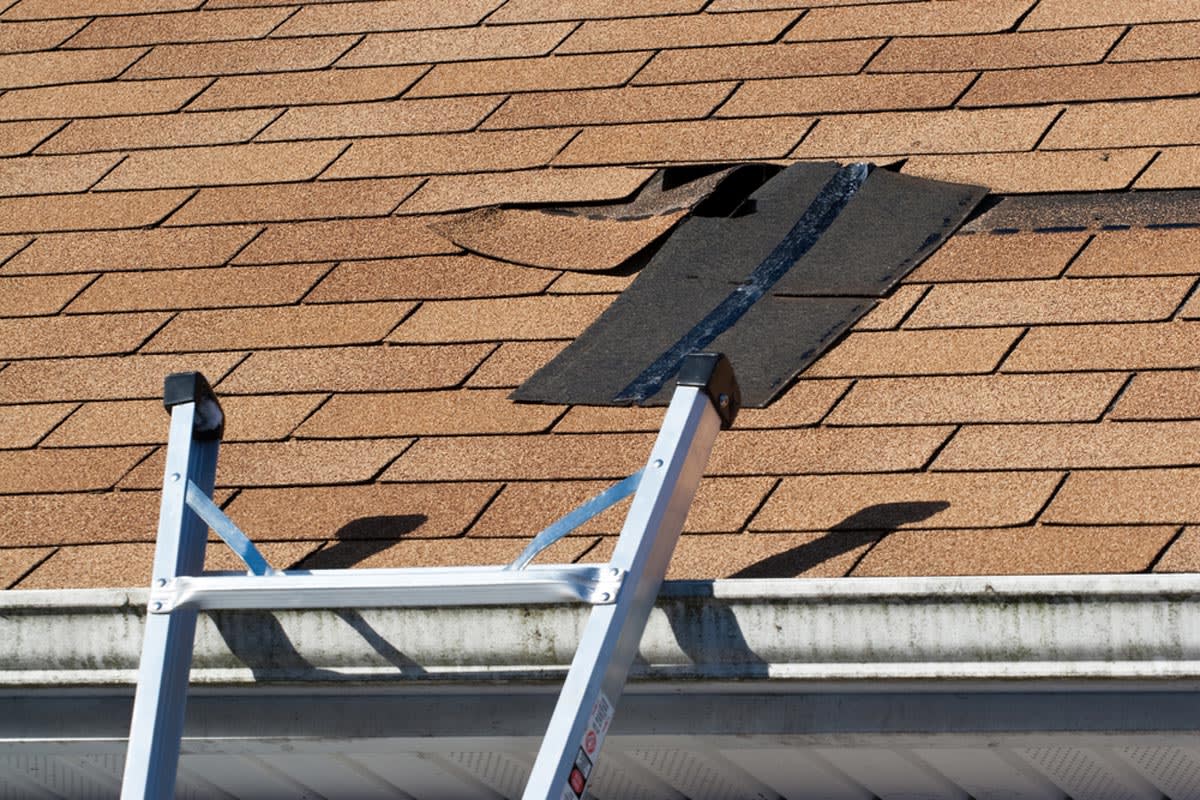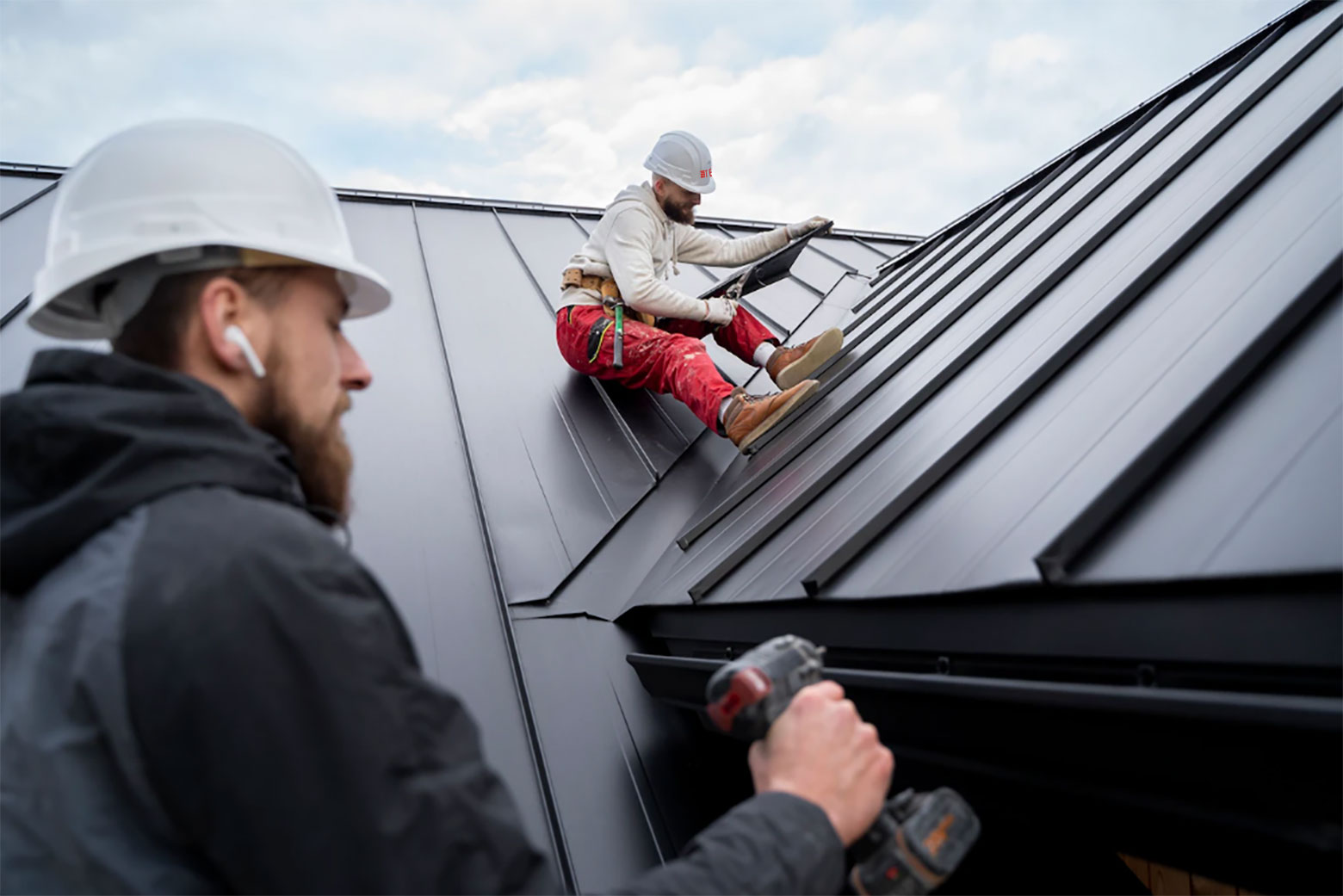Roof Repair Oahu: Quick and Affordable Roof Repairs Near You
Comprehending the Different Kinds of Roofings: A Comprehensive Overview for Homeowners
In the world of homeownership, picking the appropriate roofing design is a choice that carries substantial implications for both capability and visual charm. With a selection of alternatives-- varying from the standard gable to the modern level-- each type presents one-of-a-kind advantages and obstacles that need to straighten with the house owner's particular requirements and environmental factors to consider. Comprehending these distinctions not only help in making an informed option however likewise affects lasting maintenance and power performance. As we explore the details of different roofing system types, it ends up being noticeable that a person dimension does not fit all; the right option may surprise you.
Saddleback Roof
Gable roofs, defined by their triangular form, are amongst the most popular roofing styles as a result of their simplicity and efficiency in losing water and snow. This style includes two sloping sides that fulfill at a ridge, permitting effective drain and lessening the threat of water buildup. The steep pitch frequently linked with gable roof coverings boosts their capability to manage hefty rainfall, making them suitable for different climates.
In addition to their practical advantages, saddleback roofs supply visual adaptability. They can be adapted to various building styles, from traditional to modern-day homes. The design can also accommodate additional functions such as dormer windows, which boost all-natural light and air flow in the attic area.
Furthermore, saddleback roofs offer adequate space for insulation, adding to energy performance. Homeowners can pick from a range of roof covering materials, including asphalt shingles, metal, and tiles, additionally boosting personalization options.
Regardless of their advantages, gable roofing systems might call for extra support in areas prone to high winds or heavy snowfall. In general, the gable roofing system continues to be a popular option because of its blend of functionality, longevity, and visual appeal.
Flat Roofs
Level roofs are frequently acknowledged for their minimal style and functional applications, especially in commercial and commercial setups (oahu roofing). These roofs feature a horizontal or nearly straight surface, which enables for easy building and construction and versatile area use. While they may lack the aesthetic appeal of pitched roof coverings, level roofings supply numerous advantages, especially in city atmospheres where making best use of space is important
One of the key advantages of flat roofing systems is their accessibility. Property owners can use the roofing system area for various objectives, such as rooftop gardens, terraces, or solar panel installations. Additionally, flat roofing systems are commonly a lot more cost-effective to maintain and set up contrasted to their sloped equivalents, as they need fewer materials and labor.
Usual materials utilized for level roofing systems consist of built-up roofing (BUR), changed bitumen, and single-ply membrane layers, each offering distinct advantages. In general, level roofs offer as a functional and versatile option for several property owners and companies alike.
Hip Roof Coverings
Hip roofings are identified by their sloped sides that converge at the top, developing a ridge. This layout stands out from gable roofing systems, as all four sides of a hip roof covering incline downwards towards the wall surfaces, supplying an extra secure framework. The angle of the slopes can differ, allowing for versatility in architectural appearances and functionality.
Among the primary advantages of hip roofing systems is their capacity to withstand heavy winds and adverse climate problems. The sloped surfaces enable much better water drainage, minimizing the danger of leaks and water damages. In addition, hip roofings supply increased attic room space, which can be made use of for storage and even exchanged habitable areas.
Nonetheless, constructing a hip roofing system can be a lot more costly and intricate than less complex roofing system types, such as gable roofing systems. The added product and labor associated with developing the slopes and guaranteeing proper structural stability can cause greater expenditures. Despite these disadvantages, numerous homeowners prefer hip roofing systems for their durability, visual charm, and possibility for power effectiveness.
Mansard Roofing Systems
Mansard roofs, frequently recognized by their one-of-a-kind four-sided design, function 2 inclines on each side, with the lower incline being steeper than the upper. This building style, stemming from France in the 17th century, is not just aesthetically appealing yet practical, as it makes best use of the useful room in the upper floors of a structure. The steep reduced incline permits for even more clearance, making it an optimal selection for lofts or attics, which can be transformed right into living spaces.
Mansard roof coverings are characterized by their flexibility, suiting various building styles, from standard to contemporary. They can be Read More Here created with different materials, consisting of asphalt roof shingles, slate, or steel, giving property owners with a variety of choices to suit their spending plans and choices. Additionally, the design permits the combination of dormer windows, boosting all-natural light and air flow in the upper levels.
However, it is vital to take into consideration the prospective drawbacks. Mansard roofs may need more upkeep due to the intricacy of their layout, and their high inclines useful reference can be testing for snow and rain runoff. In general, mansard roofing systems integrate style with functionality, making them a prominent selection among property owners seeking distinct building attributes.
Dropped Roof Coverings
As homeowners significantly look for simplicity and performance in their building designs, lost roofing systems have actually arised as a popular selection. Characterized by a single sloping aircraft, a shed roofing system offers a minimalist visual that complements various home styles, from contemporary to rustic.
Among the primary benefits of a shed roof covering is its uncomplicated construction, which commonly converts to reduce labor and material prices. This design permits for reliable water drain, decreasing the risk of leaks and water damage. Additionally, the upright slope offers enough space for skylights, enhancing natural light within the inside.
Lost roofs also use adaptability in regards to usage. They can be successfully integrated into additions, garages, or outdoor frameworks like sheds and pavilions. Moreover, this roofing system style can suit different roof materials, including metal, asphalt tiles, or even green roofs, lining up with eco-friendly initiatives.
Nonetheless, it is important to think about local environment problems, as heavy snow lots may necessitate adjustments to the roofing system's angle or framework. Overall, lost roofings present a sensible and cosmetically pleasing alternative for house owners aiming to optimize performance without jeopardizing style.
Conclusion


Gable roofs, visit this site right here characterized by their triangular form, are amongst the most prominent roofing designs due to their simpleness and effectiveness in shedding water and snow. oahu roofing. The high pitch commonly linked with gable roofs enhances their ability to manage heavy precipitation, making them ideal for numerous environments
While they may do not have the visual allure of pitched roof coverings, level roofs offer countless benefits, particularly in metropolitan atmospheres where making the most of space is critical.
